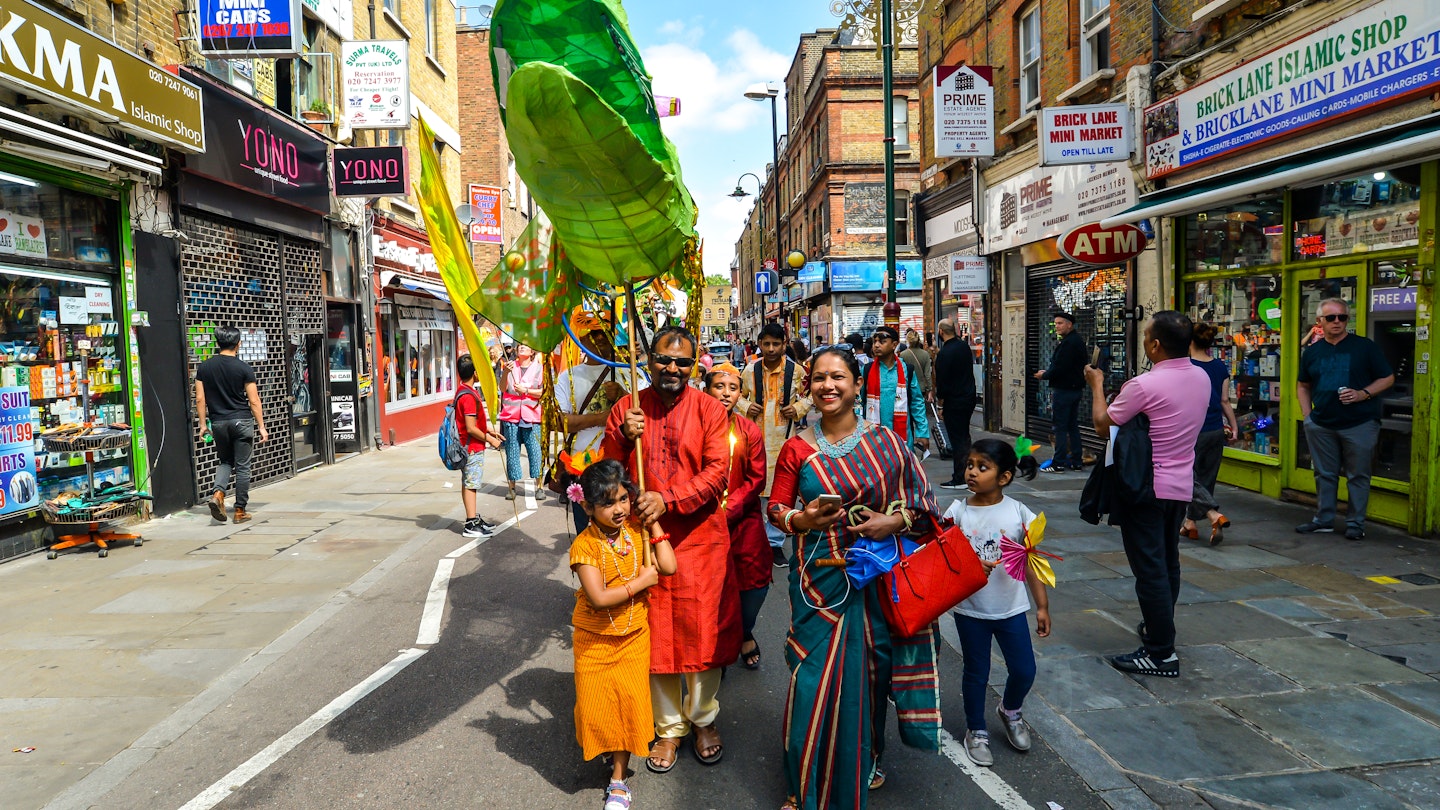Exploring Brick Lane: A Deep Dive into Banglatown
Brick Lane is famous for its vintage boutiques, vibrant street art, and bagel shops that command long lines around the clock.
Moreover, it is also the heartland of the UK’s Bangladeshi community, which has even been renamed “Banglatown” by the local council—a title emblazoned in Bengali on the gate at the southern entrance to the east London enclave.
The Cultural Richness of Banglatown
Beneath the English signs along the street, plaques bear the Bengali names for each road, while lampposts are painted in green and red, reflecting the colors of the Bangladesh flag. The Banglatown archway stands next to a mural by Mohammed Ali Aerosol commemorating Bangladesh’s 50th anniversary of independence and showcasing the ongoing bond between London and Sylhet, a city in northeastern Bangladesh.
Tracing the Bangladesh Regions of Brick Lane
Tharik Hussain, a writer with a deep connection to this area, explains that the community isn’t solely Bangladeshi; they originate from a distinct corner of Bangladesh, the Sylhet region. This influx began in the 1960s when many found work in the textile factories around Brick Lane.
Sylhetis often speak their own language, Sylheti, especially prevalent in Brick Lane’s Indian restaurants, which are often referred to as Indian due to the historical context—Bangladesh was either not yet established or not recognized as a culinary identity. Consequently, the food available is more of an anglicized adaptation.
Chicken Tikka Masala: A Cultural Icon
While the Bangladeshi community takes pride in the successes of its cuisine, such as chicken tikka masala, which was described as “a true British national dish” by the UK’s former foreign secretary Robin Cook, there is a growing movement to promote more authentic Bangladeshi cuisine. Hussain notes that this revival echoes the Indian restaurant boom following the Second World War.
Food is a vital thread in the tapestry of identity and heritage for British Bangladeshis, symbolizing a deeper connection to their roots. Thus, there is an emerging hope that local diners will find a greater appreciation for authentic dishes.
Finding Common Ground in Sharing Cultures
In 2007, the Tower Hamlets council designated Brick Lane as a tourist area centering on creativity and culture. However, the rapid gentrification has raised concerns among local businesses and residents about losing the neighborhood’s unique character. Hussain maintains a positive outlook on the evolving dynamics between the Bangladeshi community and new arrivals, suggesting these tensions are beginning to find a middle ground.
Graam Bangla: A Culinary Gem
Hussain’s favorite restaurant, Graam Bangla, embodies the pride of this culinary heritage. Chef Atikur Rahman encourages patrons to indulge in a true Sylheti dining experience. The menu features dishes that are not just culturally significant but also deeply rooted in home traditions.
At Graam Bangla, dishes like the hearty boal maas catfish curry and the vibrant keema aloo showcase the culinary breadth of the Sylheti region. Hussain emphasizes that this food represents authentic maternal recipes passed down through generations.
Beyond the Gastronomy: Historical and Cultural Insights
While the restaurant scene is a significant draw, Banglatown is rich in cultural offerings. The Brick Lane Mosque features what Hussain describes as the country’s “hippest minaret,” known for its color-changing LED lights. There is also the Kobi Nazrul Centre, a cultural hub that supports Bengali arts and hosts exhibitions and plays.
Additionally, sites like Altab Ali Park commemorate both the history and struggles of the Bangladeshi community. Named after a local textile worker who was murdered in 1978, the park serves as a memorial for those lost fighting against racial injustice.
Overall, Brick Lane stands as a testament to the rich heritage of the Bangladeshi community, preserving history while navigating the complexities of modern urban life. As Hussain dreams of expanding the concept of Banglatown globally, he envisions a future where more urban districts carry the essence of their cultural identities.




